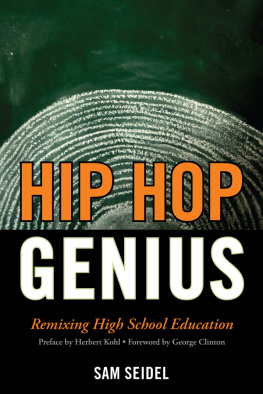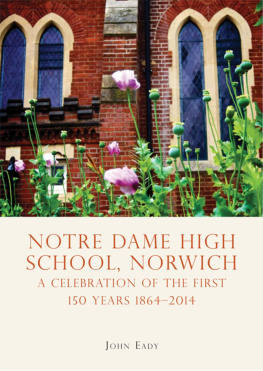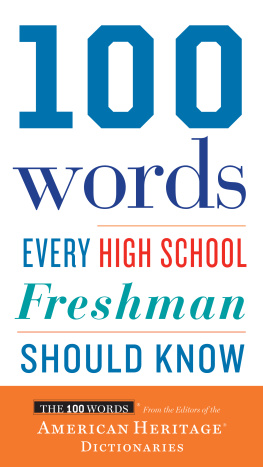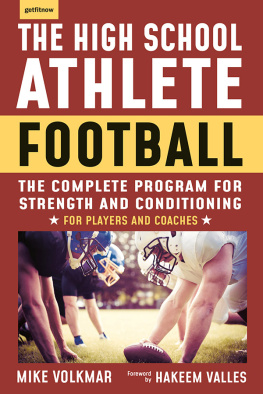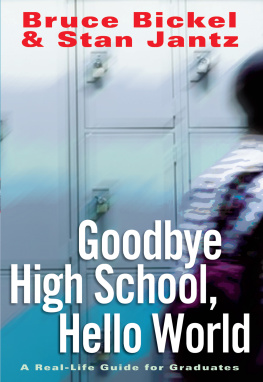
Also by Susan Engel
The End of the Rainbow: How Educating for Happiness (Not Money)
Would Transform Our Schools
The Hungry Mind: The Origins of Curiosity in Childhood
Real Kids: Making Meaning in Everyday Life
The Stories Children Tell: Making Sense of the Narratives of Childhood
Context Is Everything: The Nature of Memory
Red Flags or Red Herrings? Predicting Who Your Child Will Become

2016 by Samuel Levin and Susan Engel
All rights reserved.
No part of this book may be reproduced, in any form, without written permission from the publisher.
Requests for permission to reproduce selections from this book should be mailed to: Permissions Department, The New Press, 120 Wall Street, 31st floor, New York, NY 10005.
Published in the United States by The New Press, New York, 2016
Distributed by Perseus Distribution
ISBN 978-1-62097-153-6 (e-book)
CIP data is available.
The New Press publishes books that promote and enrich public discussion and understanding of the issues vital to our democracy and to a more equitable world. These books are made possible by the enthusiasm of our readers; the support of a committed group of donors, large and small; the collaboration of our many partners in the independent media and the not-for-profit sector; booksellers, who often hand-sell New Press books; librarians; and above all by our authors.
www.thenewpress.com
Book design and composition by Bookbright Media
This book was set in Janson Text and Gill Sans
Printed in the United States of America
10 9 8 7 6 5 4 3 2 1
For Mr. P and the original Indies
Table of Contents
Guide
CONTENTS
Sam thanks Beth Denham for support and feedback every step of the way. Susan thanks her Williams students for their wonderful questions, ideas, and stories.
We both thank Marc Favreau for his love of books and education.

High school isnt so bad. But when it comes to educating the next generation, not so bad is terrible. It has become something like a waiting room at a train station, a place for kids to hang out and pass the time on their way to somewhere else ostensibly more important, desirable, and interestingadulthood. It is necessary, but not especially appealing or meaningful in its own right. For some teens, its an abysmal waiting roomuncomfortable, tedious, and pointless. For others, the waiting room is perfectly nicethey spend their four years doing well on tests, passing the time with buddies, and serving on the student council. But for most, the waiting room is merely tolerable. And theres been too little talk about those kids.
Weve been distracted by the extremes: kids who are so miserable in high school that they drop out, kill themselves, or get in legal trouble, or kids who thrive against all odds, working their way from poverty to great accomplishment.
But such vivid narratives of anguish and victory obscure the most common stories of allthe stories of the students who stay in school all four years, perhaps lucking into a good class every term or so, earning decent grades, keeping their heads down until college. These students seem okay. No triumph, no tragedy. But they are simply enduring school, thinking about what comes next, and waiting till its over. For most kids in this country, high school is, at best, mediocre.
Listening to teens and adults talk about high school, you would think it was inevitable for teenagers to spend four of the most important and vibrant years of their lives simply getting by.
The truth is, we know from a wealth of recent research that adolescence is a volatile and potent developmental moment in a persons life. As Laurence Steinberg, a leading expert on adolescence, says, its the age of psychological opportunity. Sometime between the ages of thirteen and fourteen, teenagers achieve new heights of intellectual ability, explode with interest in the world around them, and begin relating to others in ways they werent able to before. They also are still cognitively flexible and receptive, intellectually and morally hungry, able to learn complex material, and filled with energy, a kind that wont last beyond early adulthood. In other words, they have developmentally unique strengths and capacities. And yet, high school seems to make no use of all that potential.
Is there any inherent reason why teenagers in our culture must spend the bulk of their time in settings that are confining, rigid, ugly, and disconnected from their communities, doing tasks that feel (and often are) pointless, devoid of meaning, and irrelevant to the things that most concern them?
We dont think so. One of us (Susan) is a developmental psychologist who has spent the last thirty-five years studying the paths by which children become adults and trying to figure out how schools can optimize rather than subvert childrens personal growth. The other (Sam) actually did it. When he was sixteen years old, Sam started a new kind of high school, the Independent Project, a school within a public school in western Massachusetts. It succeeded beyond expectations, and in unpredictable ways.
The school he founded was based on a few simple ideas about what kids are like, what they need, what they are capable of, and what they should get out of their high school experience. Though the ideas are simple, they are strikingly different from what you see in most schools throughout the country. Moreover, they are slippery: straightforward but easy to get wrong.
We wrote this book together because the idea of the Independent Project grew out of conversations between us. As the school came to life, we continued having conversations: about the ideas themselves, about how to embody those ideas in specific educational practices, and about what was working and what wasnt. Susan talked to Sam about educational theory and the psychology of adolescence, and Sam talked to Susan about what he and his friends yearned for at school.
Here we were, a teacher and a student, a mother in her fifties and a young man in his teens, someone who had thought endlessly about schools and someone who started oneboth of us eager to put theory and practice together.
Because we played such different roles in the creation of the Independent Project, and because we come to the whole enterprise from two vantage points, we thought it essential that we each tell our part of the story in our own way, one from the inside and one from the outside. Because our thinking about schools over the last few years has been a constant dialogue, the book follows suit. We alternate between Susans voice and Sams.
Theres one more reason we wrote this book together. In addition to being teacher and student, older and younger, psychologist and adolescent, we are also mother and son. The school, and the argument that emerged, began at our dinner table.
The book contains three interwoven threads. First, a new idea about teenagers and education. This idea draws on research and theory. But it also draws on the everyday experiences of kids, parents, and teachers who live high school day in and day out.


